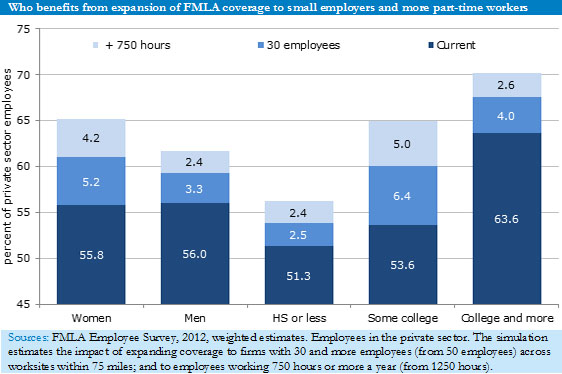February 05, 2014
Today the Family and Medical Leave Act (FMLA) turns 21, and CEPR’s Eileen Appelbaum and Helene Jorgenson have a new paper that finds that expanding FMLA coverage in certain ways would increase access to leave for 1.4 million to 8.3 million more employees in the private sector.
The FMLA provides job-protected, unpaid family and medical leave, and millions of workers have benefited from it. While the U.S. lags behind nearly all other high-income countries in enabling people to take the time they need to care for themselves and their families when faced with serious illness or welcoming a new child, the FMLA has been a first step towards catching up to the rest of the developed world.
Unfortunately, FMLA coverage and eligibility restrictions resulted in 49.3 million employees (44.1 percent) in the private sector being ineligible for FMLA leave in 2012. Those workers could still be fired if they got sick, had a baby, or needed to care for a seriously ill family member.
Eileen and Helene’s new analysis looks at which workers are most likely to qualify for FMLA coverage, as well as the effects of different ways to extend eligibility, such as to smaller employers and employees working fewer hours. They find that women of childbearing age would especially benefit from an expansion of eligibility.
Today’s report joins several other analyses of the FMLA done by CEPR economists over the past year:
In a report jointly released by CEPR and the Center for American Progress, John Schmitt looks at data on the use of parental leave in the first two decades since the passage of the FMLA.
Eileen Appelbaum called for paid family and medical leave in U.S. News & World Report, as many workers who are eligible for FMLA’s unpaid leave simply can’t afford to take it. She also looks to a model for paid FMLA, California’s paid family leave program.
In addition, Eileen took a close look at Department of Labor surveys of experiences with the FMLA and wrote a series of blog posts to review the results of the surveys, draw lessons about what to do next, and discuss ways to improve the effectiveness and increase the coverage of family and medical leave for American families.







